Formnext 2015: Product launches take centre stage at Europe’s new exhibition on Additive Manufacturing
The much anticipated inaugural formnext exhibition took place in Frankfurt from November 17-20, 2015. Squarely aimed at an industrial audience, the event succeeded in attracting almost all the major metal Additive Manufacturing technology suppliers. Whilst taglined as the international exhibition on additive technologies and tool making, there was a real sense that it was the Additive Manufacturing community that most fully embraced this new exhibition concept. As Metal AM magazine’s Nick Williams reports, AM technology suppliers took the opportunity to make a number of new product launches and announcements. [First published in Metal AM Vol. 1 No. 4, Winter 2015 | 25 minute read | View on Issuu | Download PDF]
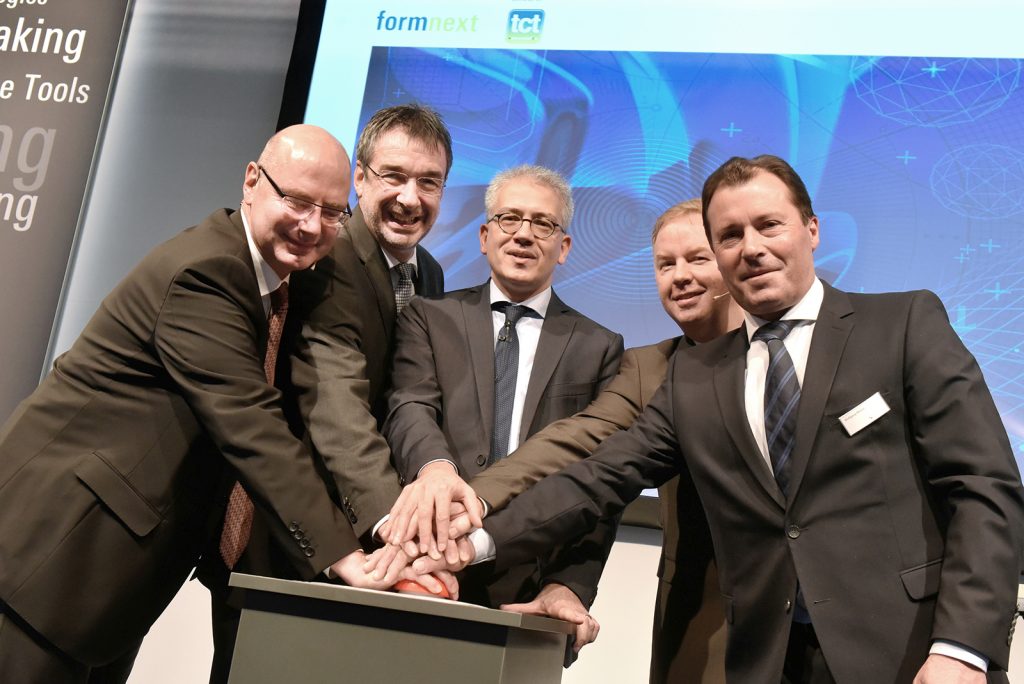
Given the early support that the organisers of formnext, Messago Messe Frankfurt, received from so many leading Additive Manufacturing technology suppliers, it was almost inevitable that this new exhibition was going to be a major success. Once on-site one only had to walk into the entrance area of the impressive Hall 3 at Messe Frankfurt to appreciate the scale of the effort that the industry’s leaders had made to ensure that this event was a truly impressive international showcase of what Additive Manufacturing can offer industry.
The exhibition, which featured 232 stands over an area of 14,028 m2 of exhibition space, attracted close to 9,000 visitors from all around the world. What was immediately noticeable from the range of exhibitors is that this event was squarely aimed at those with an interest in Additive Manufacturing for industrial applications, in contrast to consumer driven systems and applications. This was further reinforced by the sense that metal Additive Manufacturing was a real driving force at the event, reflecting the fact that as the industry evolves, the series production of advanced metal components is presenting the greatest opportunity for growth.
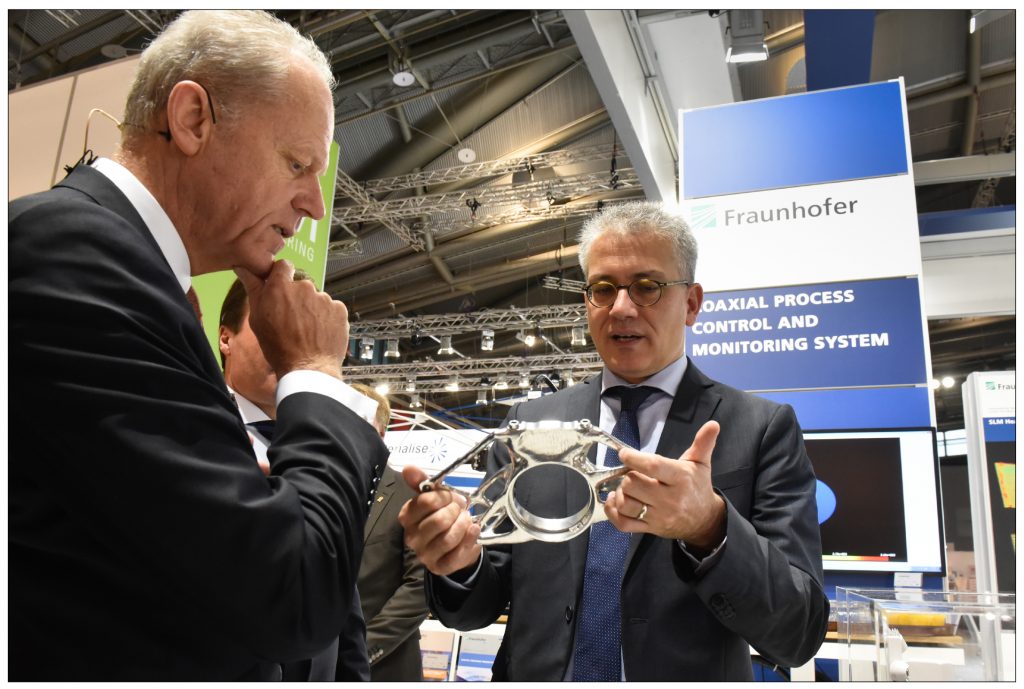
Whilst almost all AM equipment makers were present, the exhibition reflected the complete global supply chain for industrial Additive Manufacturing, from metal powders and raw materials to software, production equipment and finishing systems, as well as a diverse range of AM product manufacturers. The team from Metal Additive Manufacturing magazine, as an exhibitor at the event, was struck by the quality of the visitors who came to our stand, including senior figures from the aerospace and other end-user industries.
“With an excellent ratio of visitors per exhibitor, the debut of formnext has really hit the ground running,” stated Sascha Wenzler, Vice President at Mesago Messe Frankfurt. “Despite the tight preparation schedule, we managed to establish an excellent market position for formnext thanks to strong support from our exhibitors. At 42%, the share of international visitors at the event also sends a very positive signal.”
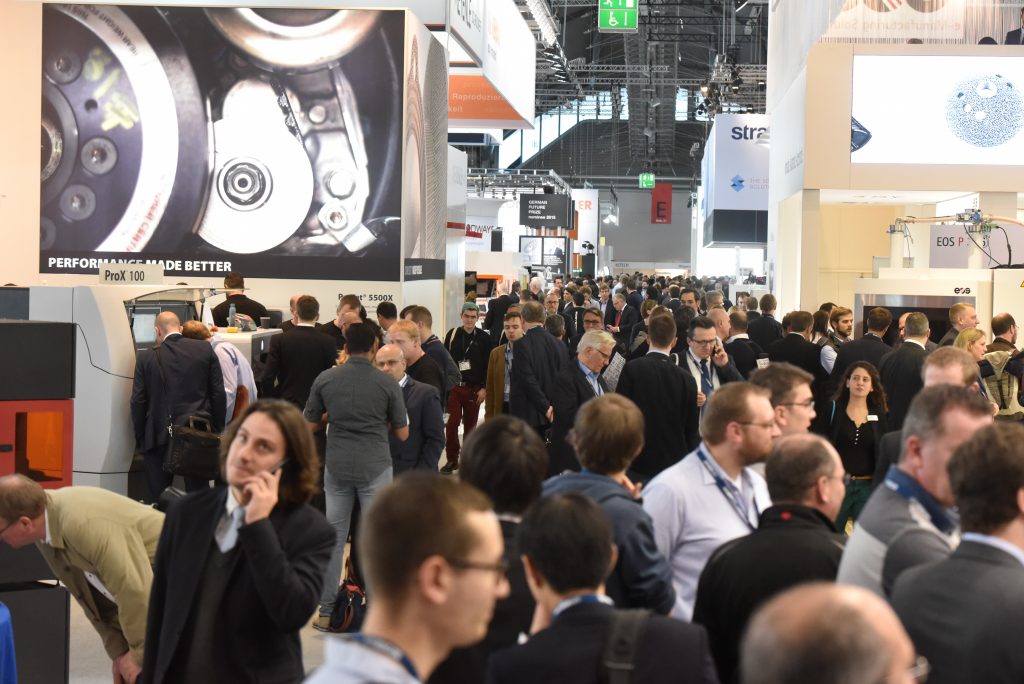
Rainer Lotz, Managing Director of Renishaw GmbH, summarised the mood at the end of the event, stating, “The additive industry is showing off its best side here; there’s nothing else like it in the world,” adding that he was pleasantly surprised by the quantity and exceptional knowledge of those in attendance. “For our service department involved in contract manufacturing with additive metal components, the contacts we’ve gained have made formnext our best event of the year.”
In parallel with the main exhibition, the formnext powered by TCT conference addressed latest developments and potential applications for Additive Manufacturing, highlighting the growing importance of the industry in product development and manufacturing. It was reported that 266 participants attended the conference, which included presentations by Audi, MTU Aero Engines, EDAG Engineering and BMW.
Over the following pages we highlight some of the major product launches and highlights from formnext.
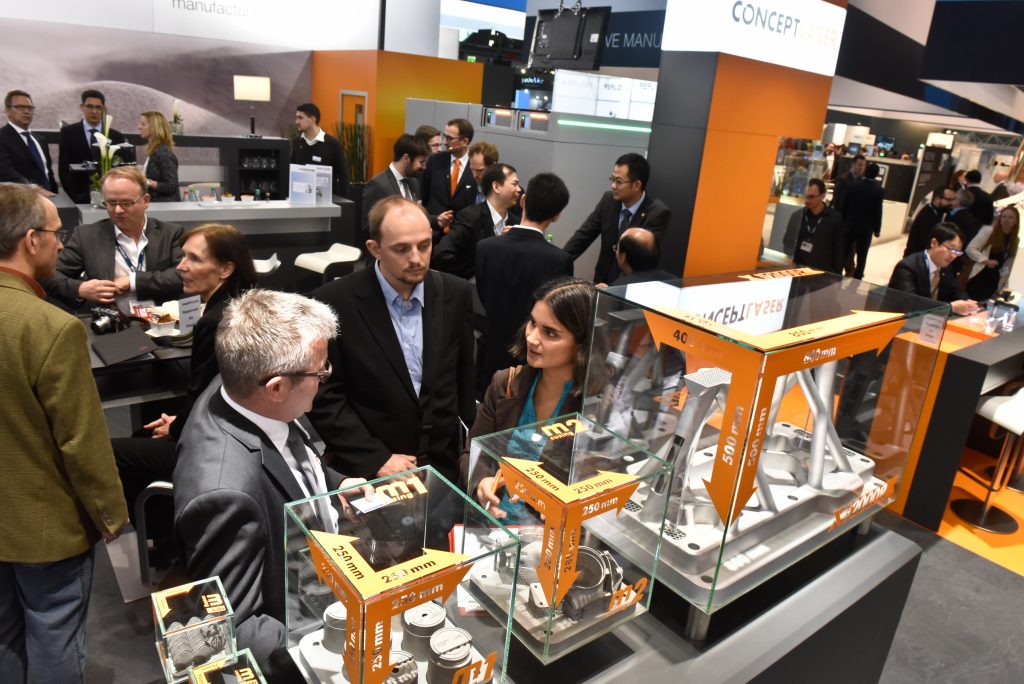
Concept Laser outlines its AM factory of the future
Concept Laser, based in Lichtenfels, Germany, unveiled a new modular machine and plant architecture at a packed press conference in the formnext exhibition hall. Under the heading of the “AM Factory of Tomorrow”, the company stated that its new, integrated machine concept promises to take Additive Manufacturing to a new level in terms of quality, flexibility and performance (Fig. 5). The company indicated that the market launch of its new system can be expected as early as the end of 2016.
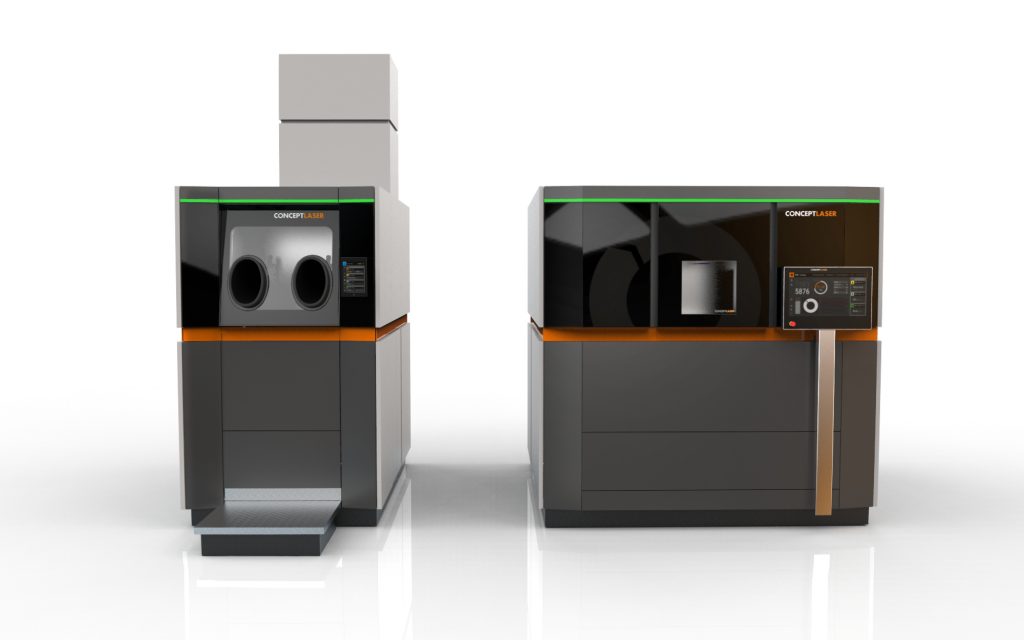
Concept Laser believes that the previous solutions for metal AM machine and plant technology on the market all relied on ideas such as more laser sources, more laser power, faster build rates or an expansion of the build envelope size. Such technology, however, is based on a standalone solution without any consistent integration into the manufacturing environment, with build job preparation and build job processing proceeding sequentially. Concept Laser’s new machine architecture aims to break with this convention.
Dr. Florian Bechmann, Head of R&D at Concept Laser, stated that in essence the new concept is about splitting up build job preparation, job manufacture and follow-up processing using any number of easily interchangeable modules. The intention is that this should drastically reduce the production downtimes associated with stand-alone machines. “There is plenty of potential here for improving the level of added value in the production chain. In contrast to purely quantitative approaches of previous machine concepts, we see here a fundamentally new approach for advancing industrial series production one step further.”
In Concept Lasers’ vision of the AM factory of tomorrow, production is decoupled, in machine terms, from the preparation and finishing processes (Fig. 6). The time window for AM production is thereby increased to a twenty four hours a day, seven days a week level, meaning that there is higher availability of all components. An automated flow of materials significantly reduces the workload for operators, and interfaces integrate the laser melting machine into traditional CNC machine technology, important for hybrid parts as well as for downstream processes such as post-processing and finishing.
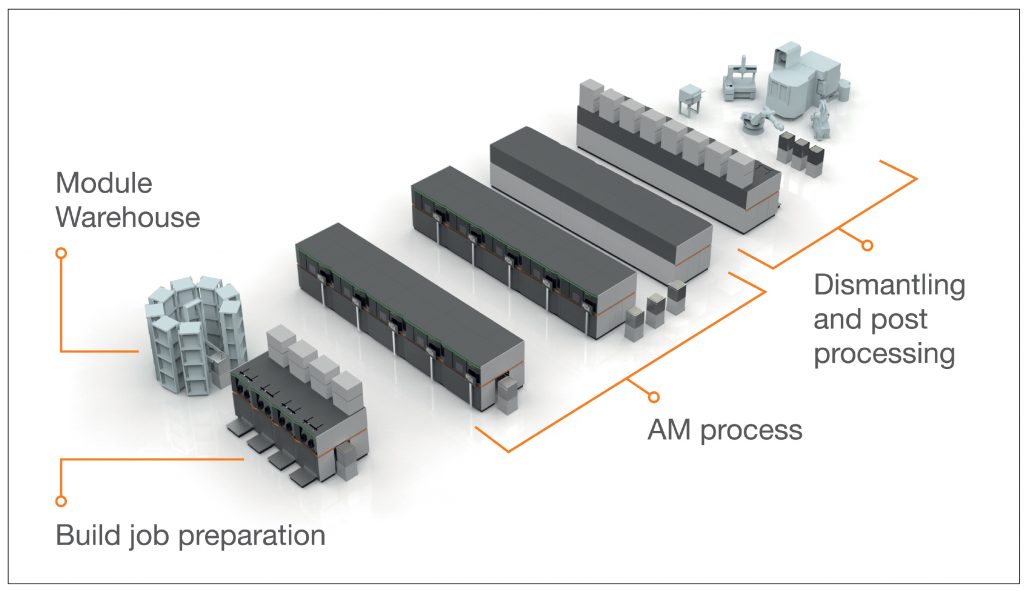
The modular structure of handling stations, build and process units promises considerably greater flexibility and availability in terms of combinations and interlinking. Concept Laser suggested that this system will be able to handle a diversity of materials more effectively, and ultimately more economically, through a targeted combination of these modules.
Bechmann stated, “Build rates have increased enormously thanks to multilaser technology. The build envelope sizes have also experienced considerable growth. We now want to use an integrated machine concept to highlight the possible ways that the approaches of Industry 4.0 can change Additive Manufacturing as the manufacturing strategy of the future. There is plenty of potential here to increase industrial added value and enhance suitability for series production.”
The new process station has a build envelope of 400 x 400 x >400 mm and laser sources, process gas management and filter technology are integrated into the module. Layer thicknesses are within the usual range. In addition, the machine solution has a variable focus diameter and will be available optionally with one, two or four laser optics with laser power ranging from 400-1000 W. An available redundancy of the lasers will ensure that in multiple laser systems, if one laser fails, the remaining three lasers will still cover the entire build plate – the build job can still be completed. Bechmann commented, “More and more laser sources only increase the expected speeds to a limited extent. But ultimately they also increase the level of complexity and dependencies, which can result in vulnerability, and thus turn the desired positive effect into a negative.”
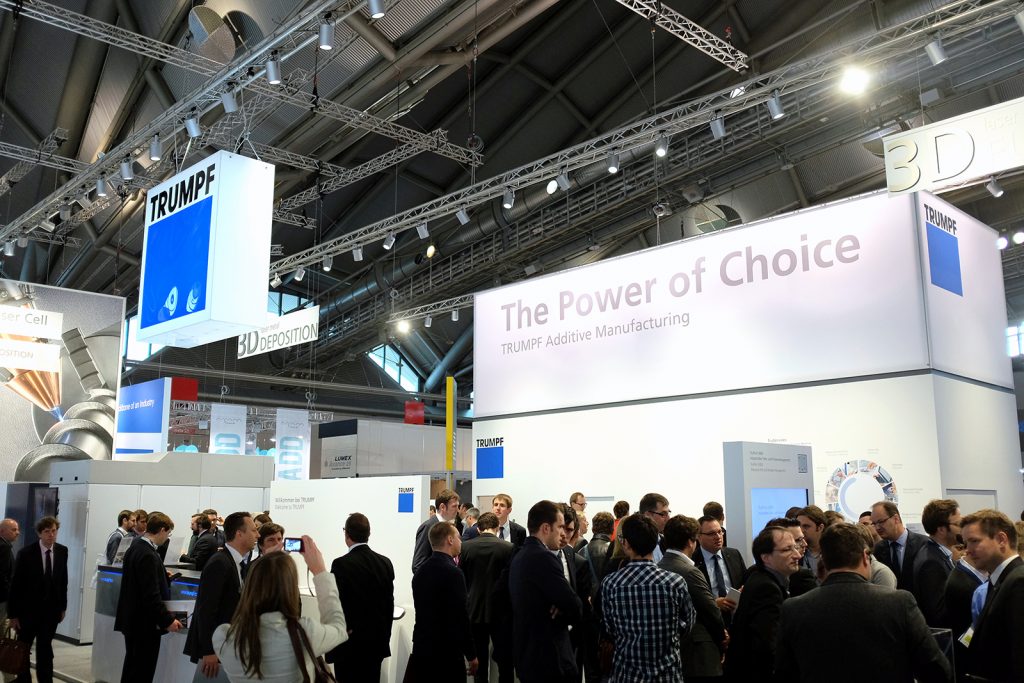
Concept Laser’s new machine concept has a new type of two-axis coating system which enables the return of the coater to be performed in parallel with exposure. This results in a considerable time saving during the coating process. The coater blades, made of rubber, steel and carbon, can be changed automatically during the build job as necessary. This results in several advantages according to Bechmann, “An automated tool changing system, as is the case with CNC machine technology, promises a high level of flexibility and time advantages when setting up the machine, as well as reducing the level of manual intervention by the operator. We deliberately talk here about ‘robust production’.”
The new modular handling station has an integrated sieving station and powder management. There is now no longer any need for containers to be used for transportation between the machine and sieving station. Unpacking, preparations for the next build job and sieving therefore take place in a self-contained system without the operator coming into contact with the powder.
Concept Laser states, however, that what also makes a modular handling station attractive are the possible configurations. A handling station can be linked to two process stations, for example, to create a manufacturing cell. The factory building kit also enables several handling stations to be joined together to create a material preparation facility and be physically separated from the process stations.
“In the future,” stated Bechmann, “we think that AM factories will be largely automated. The transport of material or entire modules can be envisaged as being done by driverless transport systems. This could then be the next step in the development. Additive Manufacturing can be automated to the maximum extent.”
Trumpf launches new machines for metal AM
Laser manufacturer Trumpf Gmbh + Co KG, based in Ditzingen, Germany, introduced new machines and equipment for the Additive Manufacturing of metal parts at formnext. With its new TruPrint 1000 LMF (Laser Metal Fusion) machine, Trumpf believes that it has created a system that appeals to both novices and those experienced in using metal AM technology (Fig. 8). The system can generate parts that are up to 100 mm in diameter and 100 mm high. The user interface, optimised for simplified touch screen control, guides the operator intuitively through the individual phases of the production process. All the components, from the laser, optics, process enclosure, filter unit and control cabinet, are integrated into the compact housing of the TruPrint 1000. In the process enclosure, the supply cylinder, construction chamber and overflow receiver are all aligned next to each other. The supply cylinder provides capacity for up to 1.4 litres of stainless steel, tool steel, aluminium or other suitable material in powder form.
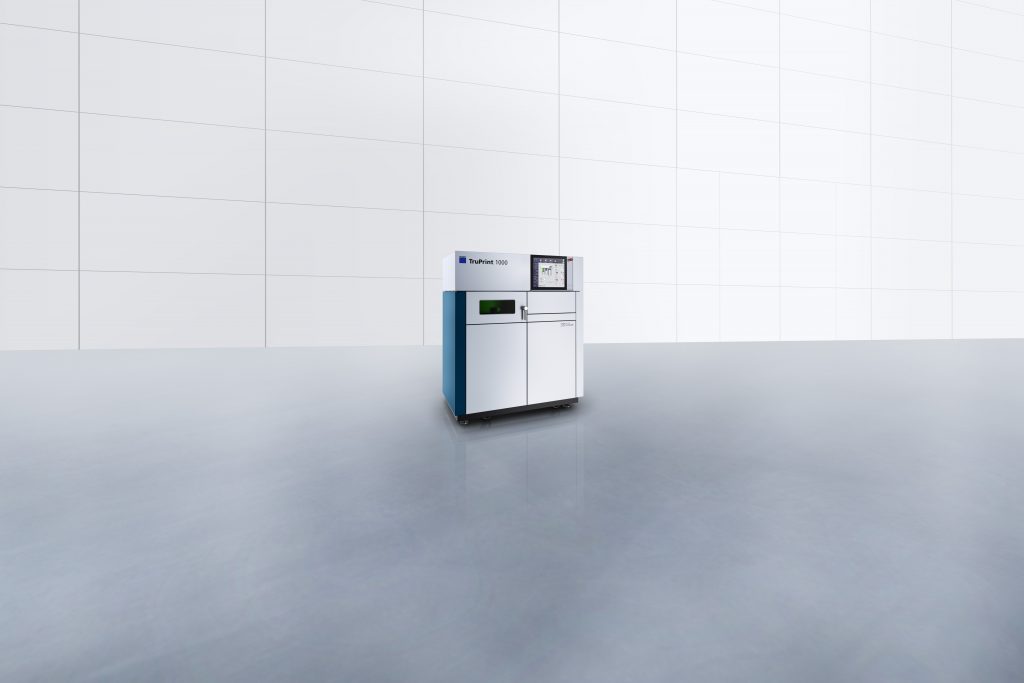
In addition to the compact 1000 model, Trumpf also unveiled a prototype of its TruPrint 3000. With this larger model, also utilising LMF technology, parts measuring up to 400 mm in height and 300 mm in diameter can be manufactured. To ensure that the process is robust and the quality of the parts remains high, the process enclosure in the 3000 model can be heated to as high as 500°C.
Trumpf has also continued the development of its Laser Metal Deposition (LMD) technology and the company presented new solutions at formnext. These systems, stated Trumpf, are suitable especially for adding volume and structures to existing parts, such as adding a bolting flange to a pipe. In LMD systems, the laser forms a melt pool on the surface of a component and fuses the powder – applied simultaneously and coaxially – so as to create the desired shape. Consequently, a layer of beads welded one to another is created. Many layers together result in a body which can expand in any direction.
An advantage of LMD technology is that the engineering required for the system is mature. Thus, depending on the specifics of the application, either the large TruLaser Cell 7040 with its five-fold design or the more compact TruLaser Cell 3000 can be equipped with the new LMD package (Fig. 9). A further advantage is the increased build speed. By adding material at rates as much as 500 cm3 per hour, LMD can be more economical than conventional manufacturing. In addition, there is virtually no limit on the combination of materials. Almost any desired sandwich structure can be produced and the process takes place on the surface of the part in the ambient atmosphere. This reduces non-productive times and thus lowers the costs per part.
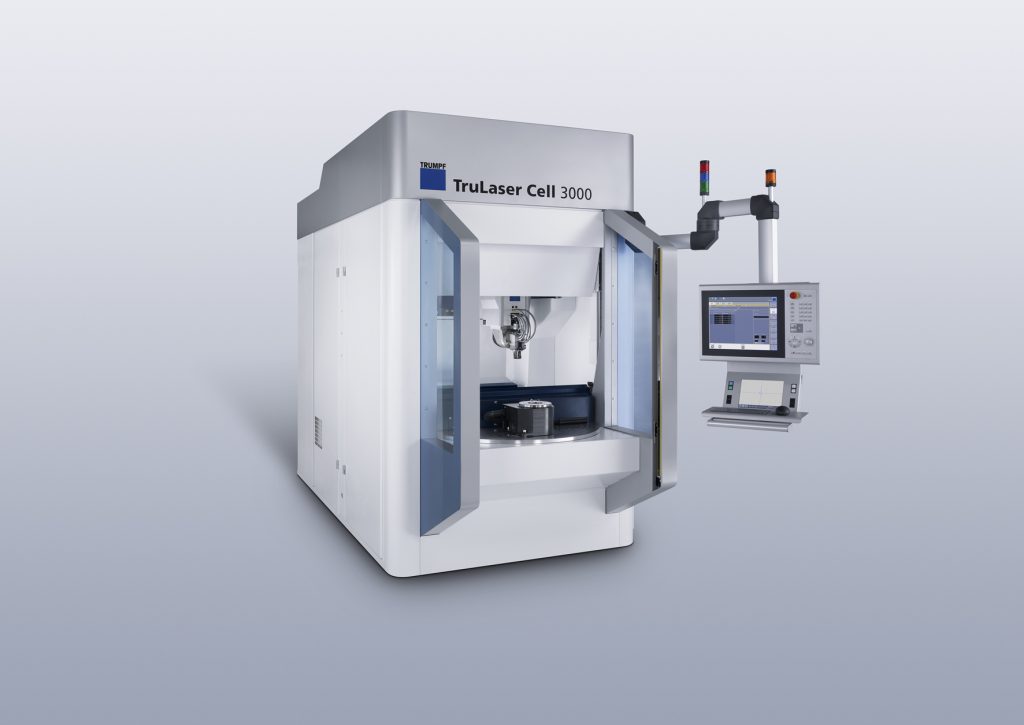
Trumpf claims that it is the world’s only manufacturer to have all the laser technologies for industrial Additive Manufacturing in its programme. With this new portfolio of technologies and products, Trumpf believes that it is now offering its customers the complete package from a single source – the laser beam source, machine, powder, services and application consulting.
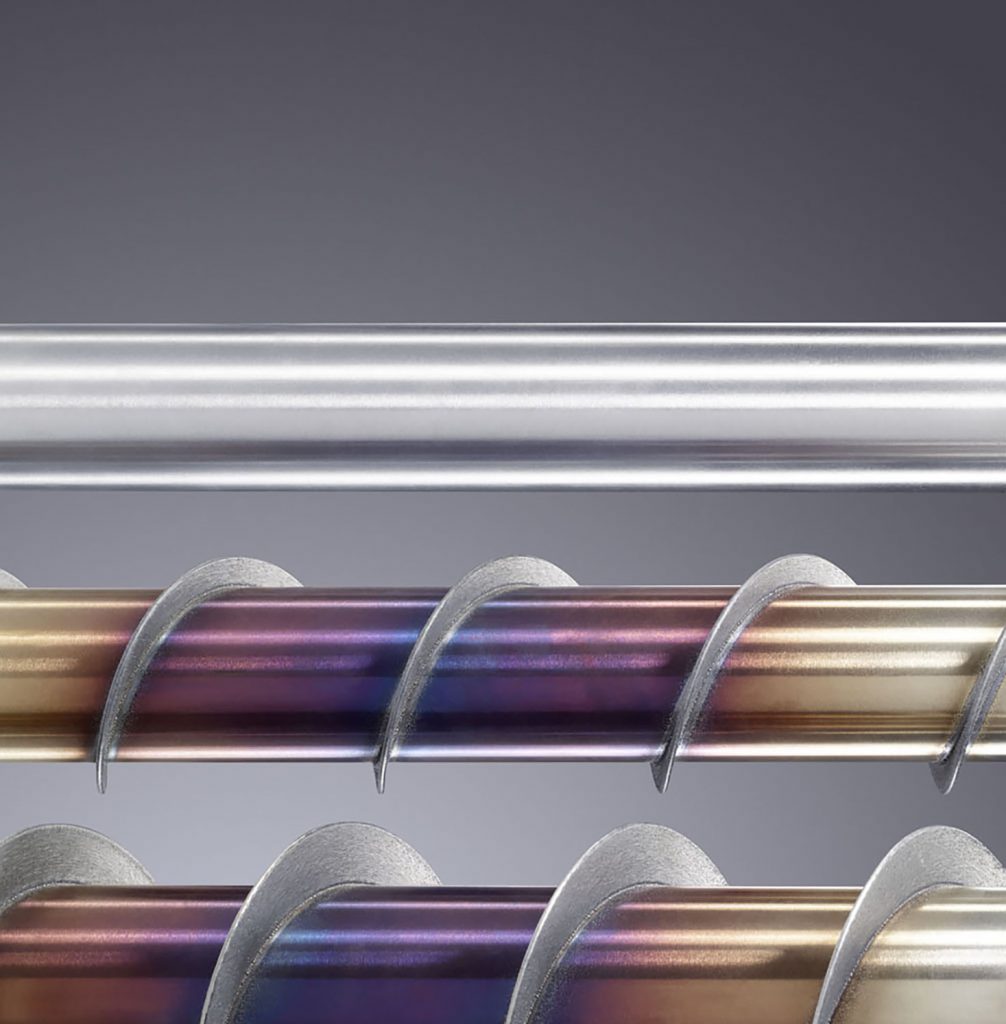
EOS introduces the M 100, EOSTATE MeltPool Monitoring and a new stainless steel powder
Leading Additive Manufacturing systems provider EOS introduced its new EOS M 100, a compact system for Direct Metal Laser Sintering (DMLS), at formnext (Fig. 11). The company, based in Munich, Germany, also announced the EOSTATE MeltPool Monitoring system, an add-on for its larger M 290 machines, as well as a new stainless steel powder.
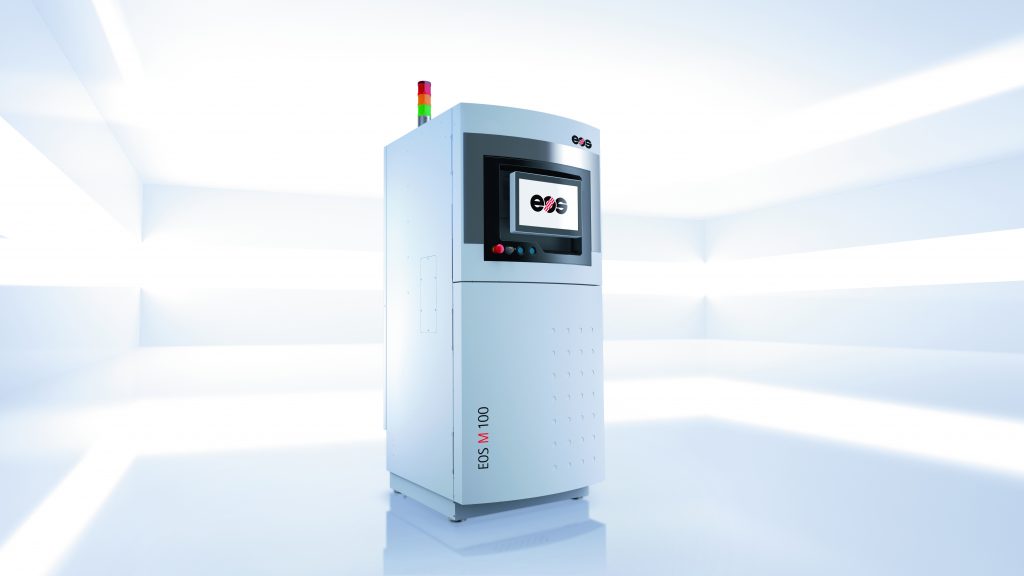
The EOS M 100 is based on the company’s EOS M 290 in terms of process and component quality and is seen as a cost-effective entry into metal Additive Manufacturing. It features a 200 W fibre laser which, due to its beam quality and performance stability, ensures optimum and consistent processing conditions, stated the company. This feature, along with a smaller laser spot with what is claimed to be excellent detail resolution, makes it possible to produce high-quality, highly-complex and delicate components.
“The EOS M 100 system impresses with the proven DMLS quality and is also the ideal choice for those considering an entry into Additive Manufacturing. With its small build volume, which is based on a round build platform with a diameter of 100 mm, the system focuses on the cost-efficient production of small quantities. For example, the system can produce approximately seventy dental crowns and bridges in three hours,” stated Dr Adrian Keppler, Chief Marketing Officer at EOS (Fig. 12).
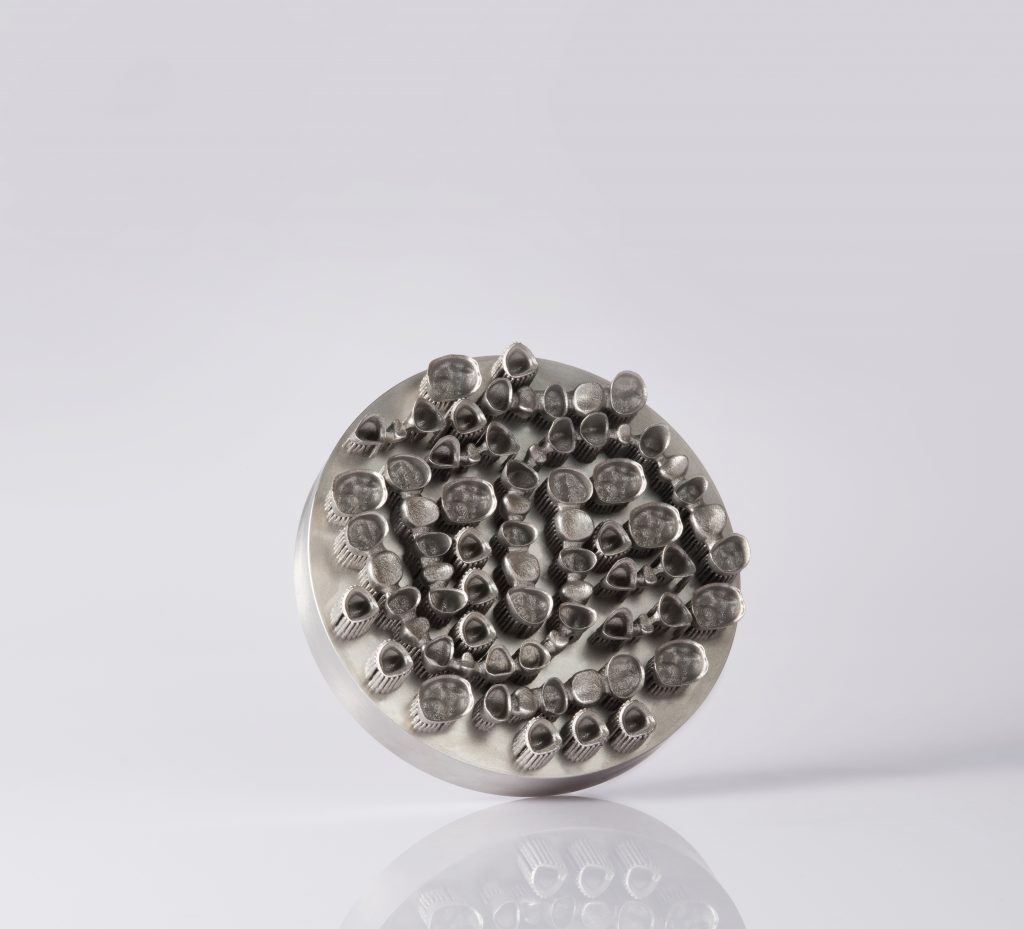
The new system can currently process two types of materials, EOS CobaltChrome SP2 and EOS StainlessSteel 316L. EOS Titanium Ti64 is still in the development stage and will be the next material to be made available for this system.
The company’s EOSTATE MeltPool Monitoring is an add-on to the EOS M 290 DMLS system and paves the way for complete part traceability as well as an automated surveillance and analysis of the melt pool during the build process. “We developed this powerful, intelligent monitoring solution jointly with Plasmo Industrietechnik GmbH, a global high-tech supplier of automated quality assurance systems. Our goal is to set a benchmark for high-end in-process monitoring for AM,” stated Dr Tobias Abeln, Chief Technology Officer at EOS.
The EOSTATE MeltPool observes the light emitted by the melt pool. Its key elements are two photodiodes located on and off axis, a camera adapter, a specialised signal amplifier and according spectral filters to separate process light from reflected laser light. The software offers automatic data error correction and real-time process visualisation and evaluation.
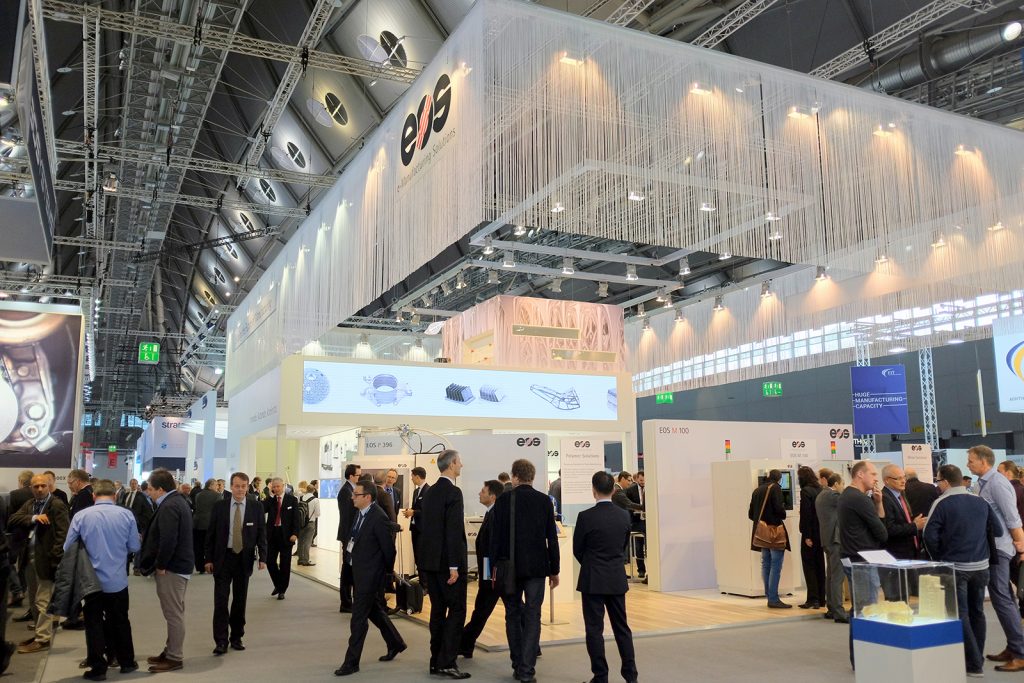
At formnext EOS also announced it is introducing a new metal powder to the market. EOS StainlessSteel CX is targeted at mould and tool manufacture and offers an extremely corrosion-resistant stainless steel with maximum stability and excellent hardness. Following the DMLS build process, the components made with this material can be easily machined and polished, states the company. The stainless steel is resistant to most corrosive plastics and dilute acids, making it the first choice for many demanding industrial applications. Due to its corrosion resistance, EOS StainlessSteel CX also reduces tool wear and maintenance costs.
Keppler stated at formnext, “Our company has been pursuing an unparalleled course of growth and success for many years. By October, there were approximately 2,000 EOS systems installed around the world. We were able to double our installed base over the last three years; during the last two years, the number of metal laser sintering systems was doubled from 400 to 800 systems. During the past business year alone, the company sold 400 systems, including 220 metal systems. This underlines EOS’ leadership role, particularly in the metal segment, and the growing interest in this technology, particularly in the series production segment.”
During the last business year, EOS was able to increase its sales revenues by 53% over the previous year, to €263 million. All regions exceeded their targets, with North America in particular delivering a record result with more than US $100 million in sales revenues. Today, EOS has 750 employees worldwide, which represents a 38% increase in its global workforce compared to the previous year. At its Krailing headquarters EOS recently started the construction of another building, since the technology and customer centre, which opened just last year, is already reaching its capacity limits,
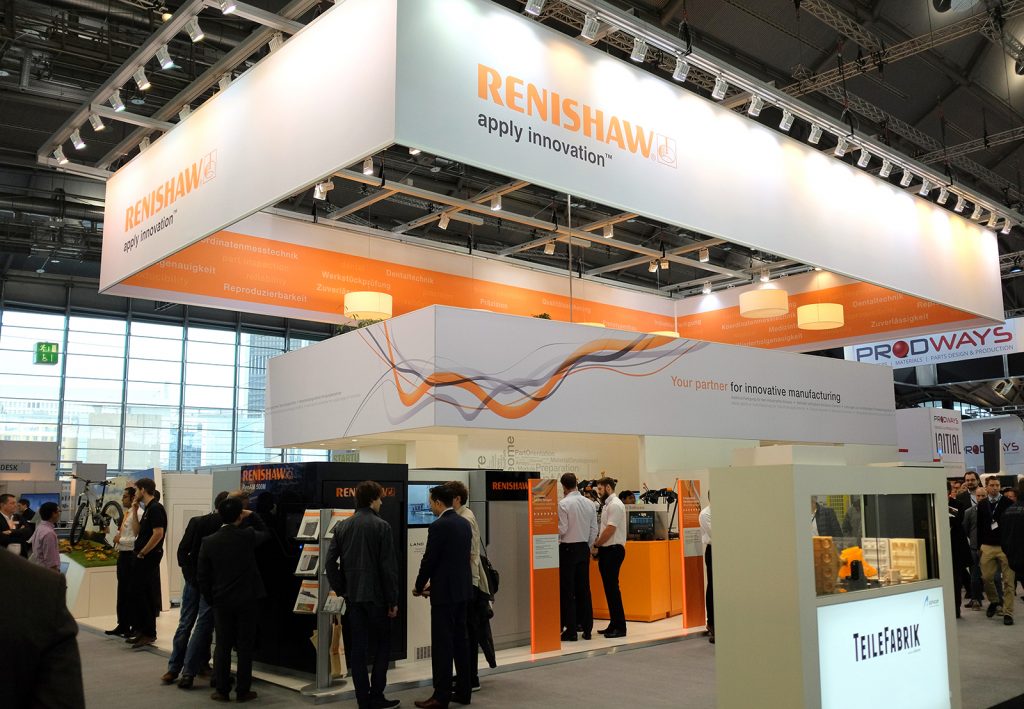
Renishaw presents new systems and software
UK based Renishaw plc presented a range of new Additive Manufacturing products at formnext. These included two new metal Additive Manufacturing systems and a new build preparation software package.
The new RenAM 500M industrial metal Additive Manufacturing system was initially introduced as the EVO Project and allows the building of complex metal components directly from CAD using metal powder fusion technology (Fig. 15). Highlights of the system include a Renishaw designed and engineered optical system with dynamic focussing; automated powder sieving and recirculation, a 500 W ytterbium fibre laser and a patented high capacity dual filter SafeChange™ system.
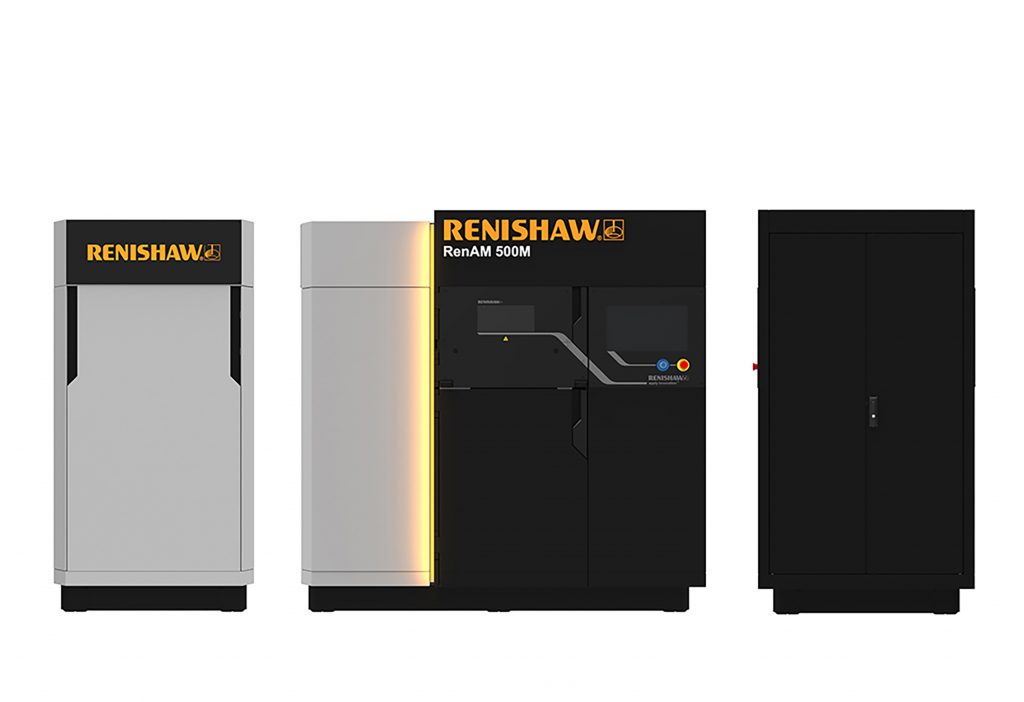
Formnext also saw the launch of the AM400 flexible metal Additive Manufacturing system. This new model is a development of the AM250 platform. It includes all the advantages of the latest machine updates with larger SafeChange™ filter, improved control software, revised gas flow and window protection system and a new 400 W optical system that gives a reduced laser beam diameter of 70 micrometres.
Renishaw, which has a team of over 300 experienced software developers all working in-house, offers its QuantAM software for build file preparation. The system is designed by Renishaw specifically for the company’s Additive Manufacturing systems.
Early next year, the company is opening its doors to share its expertise via Additive Manufacturing Solutions Centres. Here, manufacturers will benefit from dedicated incubator cells equipped with Renishaw AM systems. Customers can run an evaluation project to assess how AM might benefit their company with the support of Renishaw engineers. A key emphasis will be on knowledge and skills transfer, with the goal being to provide an insight into the technical and commercial benefits of AM and ultimately to provide the evidence to support investment in metal Additive Manufacturing technology.
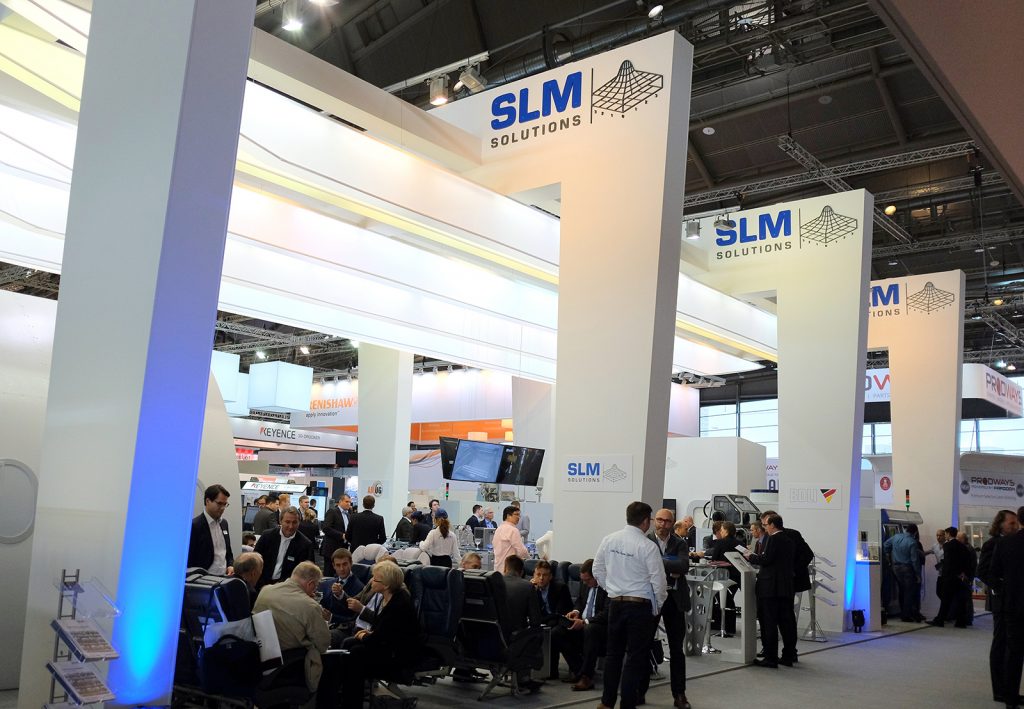
SLM Solutions focuses on aerospace AM
SLM Solutions, Luebeck, Germany, a leading provider of metal based Additive Manufacturing technology, chose an aerospace theme for its impressive 270 m² stand at formnext. The company presented its complete product portfolio including the flagship SLM 500 HL.
SLM Solutions stated that the efficiency and performance of its systems had once again been increased over the last 12 months, with the quad laser and the patented dual-beam technology of the high-performance system SLM 500 HL increasing the volume construction rate per unit time by up to 80%. The company also presented new options with a more powerful 700 W laser for its SLM 280 HL and SLM 500 HL. “The optimised and improved plant technology underlines our expertise and pioneering work in the Selective Laser Melting technology,” stated Andreas Frahm, Director of Sales and Marketing, SLM Solutions GmbH, “In addition, further improvements are being introduced to improve the quality of our systems”.
SLM Solutions’ stand also served as a platform for the exchange of information on Additive Manufacturing. The Additive Manufacturing Users Group (AMUG), an independent, cross-sectoral, global association of Additive Manufacturing users, was a partner at the booth and promoted its annual conference, to be held in St. Louis, Missouri, USA, from April 3-7, 2016. This year the Federation of German Aerospace Industries Association (BDLI) was for the first time also present on SLM Solutions’ stand, providing, stated the company, a space for the experts representing the interests of German aerospace industry to have conversations on the theme of Additive Manufacturing in the aerospace industry.
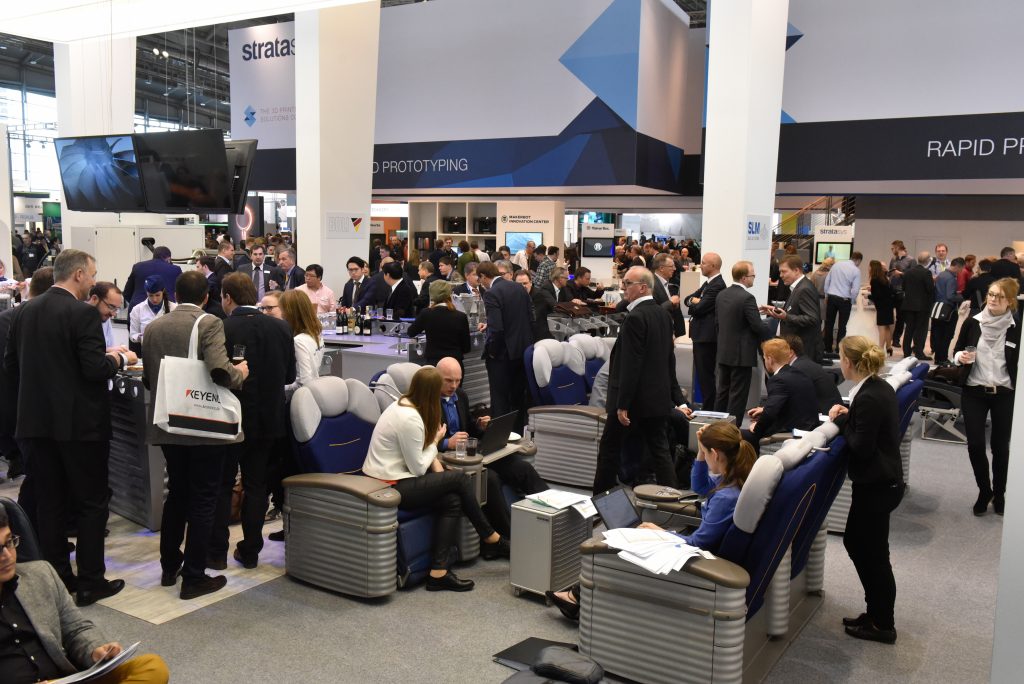
Matsuura offers hybrid metal laser sintering and milling machine to European market
Japan’s Matsuura Machinery Corporation presented its Lumex Avance-25 hybrid metal laser sintering and milling machine at formnext (Fig. 18). The system will be available in selected European countries from January 2016. The machines, which have been sold in the Asian and Japanese market since 2003, are primarily designed for the die and mould industry.
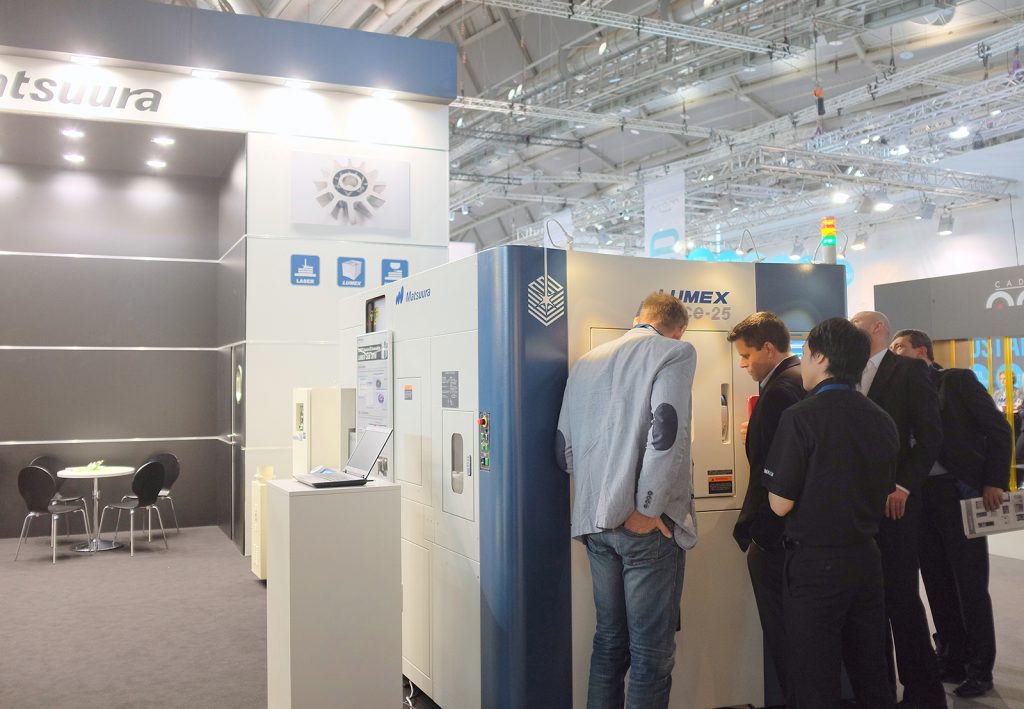
The hybrid Lumex Avance-25 machine combines additive powder bed fusion technology and subtractive high-speed milling technology in a single seamless process. The machine is said to enable the production of complex, precise moulds and parts through a combination of powder layer manufacturing and precisely milled surfaces.
Additive Industries promotes its MetalFAB1 system
Additive Industries’ first industrial metal Additive Manufacturing system, MetalFAB1, was introduced in virtual reality form at the formnext exhibition (Fig. 19). Additive Industries claims that its new system offers substantially improved performance over typical midrange metal AM systems. The industrial grade AM machine and integrated Additive World software platform is stated to offer up to a tenfold increase in reproducibility, productivity and flexibility.
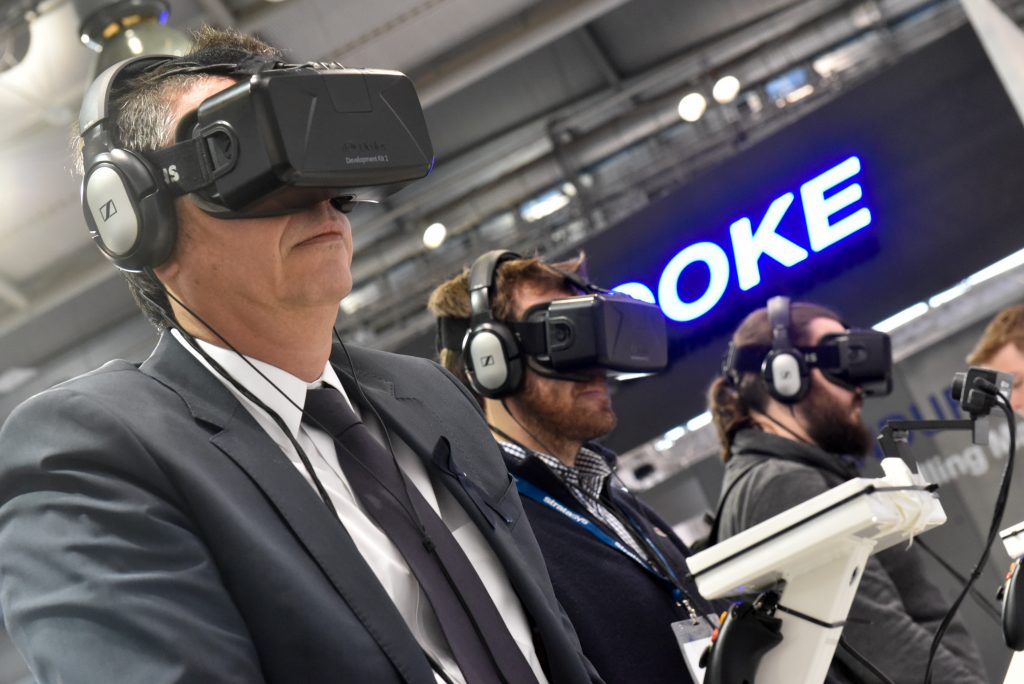
The company indicated that its improved performance is achieved by robust and thermally optimised equipment design, smart feedback control and calibration strategies, the elimination of waiting time and automation of build plate and product handling. The modular design of the MetalFAB1 system also allows for customer and application specific process configuration.
Multiple build chambers with individual integrated powder handling make this industrial 3D printer the first to combine up to four materials simultaneously in one single machine. The MetalFAB1 can be equipped with a maximum of four full field lasers, thereby eliminating the need for stitching when printing large objects. MetalFAB1 is also believed to be the only system to include a furnace for integrated stress relief heat treatment. The size of a single build envelope (420 x 420 x 400 mm) places the MetalFAB1 among the top three largest powder bed metal AM systems available.
It was reported that Additive Industries would be starting its Beta test programme in December 2015. It stated that four Beta machines have already been reserved by customers from demanding markets such as aerospace, high tech equipment and tooling. “We are eager to work closely together with our Beta customers. We will team up to further develop the process, new materials and applications as well as testing the performance to substantially improve the business cases of our customers,” stated Daan Kersten, Co-founder and CEO of Additive Industries.
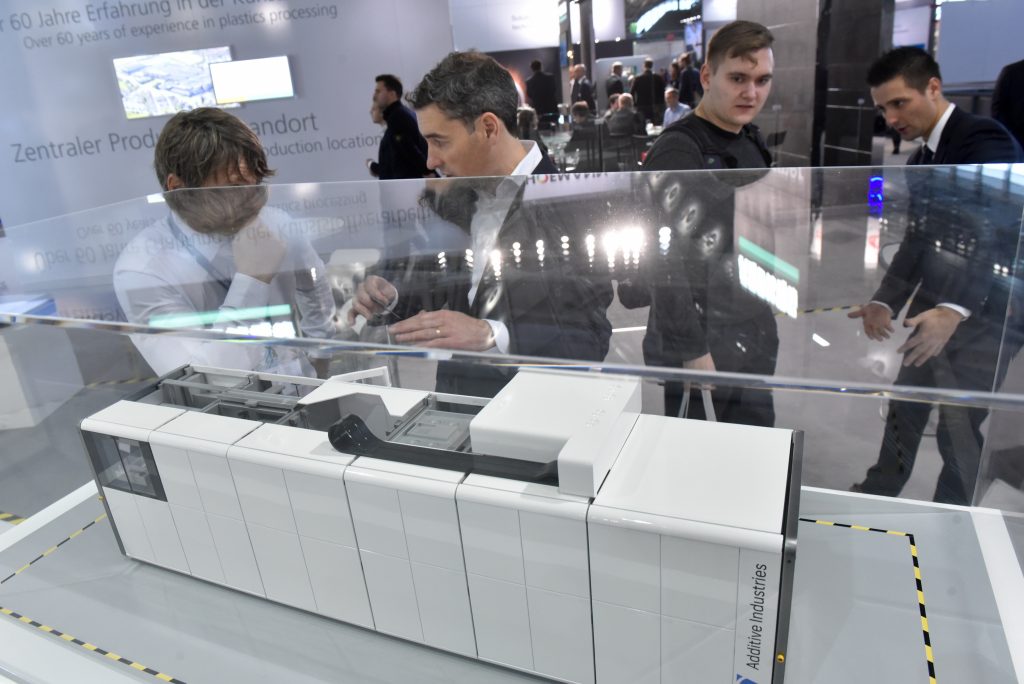
It was announced on December 1st that EOS and Additive Industries have signed a patent licence agreement in the field of industrial Additive Manufacturing of metals. The agreement initially licenses certain EOS patents to Additive Industries and may be expanded in the coming years. The parties have chosen not to disclose the details of the agreement.
“For Additive Industries, as newcomer to the industrial additive manufacturing market, this partnership is an important step on our journey to take 3D metal printing from lab to fab. Together we can expand this new production technology from the prototyping domain to the factories of the future,” stated Daan Kersten, Co-founder and CEO of Additive Industries. Mike Shellabear, Director IP and Technical Support at EOS commented, “We welcome the patent licence agreement with Additive Industries as it confirms the attractiveness of the AM process for industrial use. In addition to this, the agreement is in line with EOS’ strategy to license our IP to other companies in this industry.”
Audi showcases the future of toolmaking and Additive Manufacturing
One of the most impressive stands at formnext was that of Audi’s toolmaking division, in which the state of the art in both toolmaking and Additive Manufacturing was presented.
On a 500 m2 stand, Audi demonstrated which aspects of toolmaking in the smart factory are already being applied today for the development and production of models in both large and small series. These include intelligent tools for shaping steel and aluminium plates that recognise process related fluctuations and optimise the material flow in the tool accordingly. Visitors could also see which additive production technologies are already applied in toolmaking today.
A highlight of Audi’s stand was a functioning scale model of a 1936 Auto Union Type C Grand Prix sports car to demonstrate its metal Additive Manufacturing capabilities (Fig. 21). The company is said to be currently examining further possible applications of metal AM systems for the production of complex components.
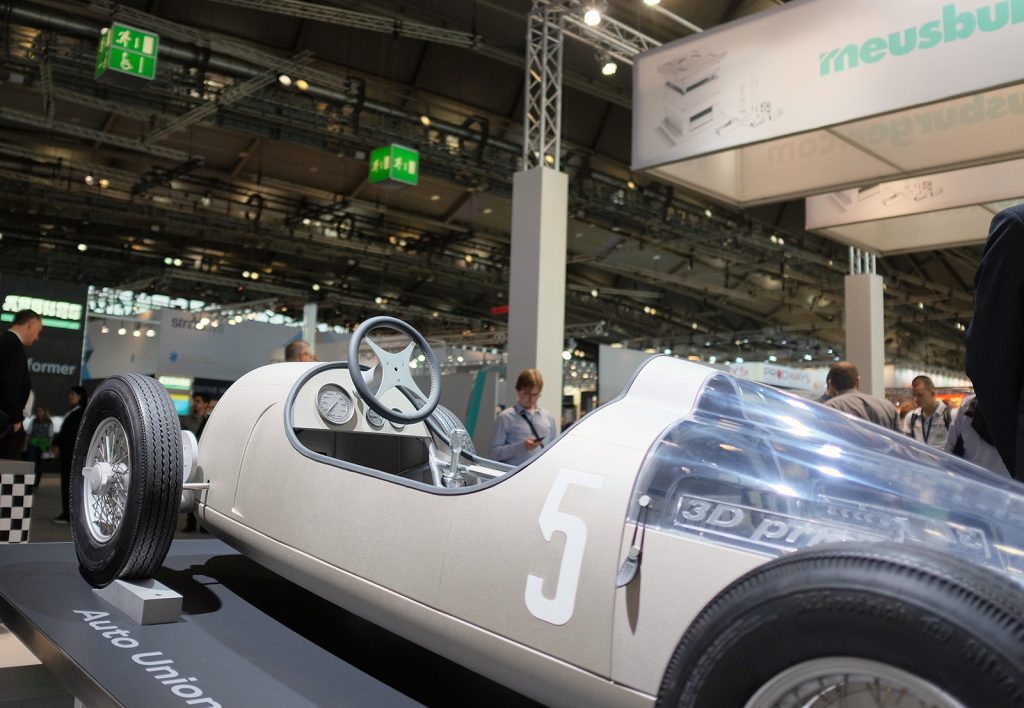
Prof. Dr. Hubert Waltl, Audi’s Board of Management Member for Production and Head of Toolmaking at the Volkswagen Group, commented at the time the scale model was announced, “We are pushing forward with new manufacturing technologies at Audi Toolmaking and at the Volkswagen Group. Together with partners in the area of research, we are constantly exploring the boundaries of new processes. One of our goals is to apply metal printers in series production.”
Michael Breme, Head of Toolmaking at Audi AG, stated, “The paradigms of the smart factory are changing our work in the Toolmaking division. In the future, we will connect equipment, machinery and people even more closely with each other and will make use of new methods to develop even more flexible and precise tools.”
Audi Toolmaking employs more than 2,000 people at five locations; Ingolstadt and Neckarsulm in Germany, Barcelona (Spain), Gyor (Hungary) and Beijing (China). The division designs, develops, constructs and tests tools for high and low volume production. They include sheet metal tools, equipment and apparatus, as well as mould making for aluminium die-casting and composite fibre components used in exterior and structural applications.
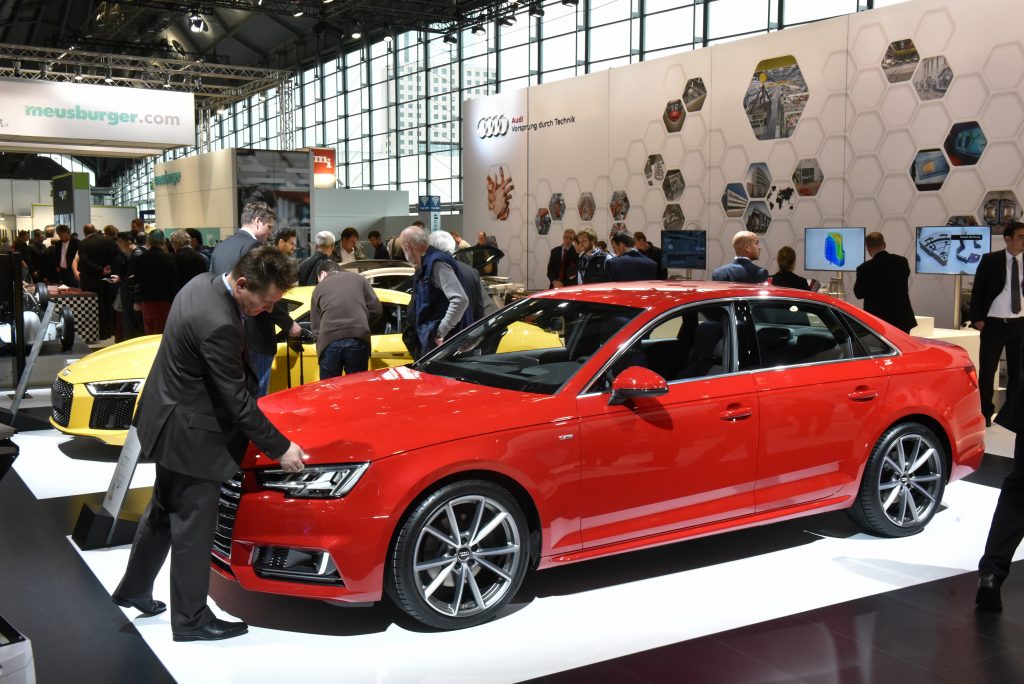
Sigma Labs promotes its PrintRite3D® system evaluation
Sigma Labs, Inc., based in Santa Fe, New Mexico, USA, is a leading developer of advanced, in process, non-destructive quality inspection systems for metal-based Additive Manufacturing. Following its participation at formnext Sigma Labs announced that a German company has entered into an evaluation period for its proprietary PrintRite3D products. As part of the agreement this customer, which wishes to remain anonymous at the present time, purchased a non-exclusive licence to test the PrintRite3D applications in certain of its laser-based powder bed metal machines – some of which were on display at Formnext.
“We are delighted that this high quality organisation has decided to evaluate our PrintRite3D software in its machines to assess our patented In-Process Quality Assurance™ (IPQA®),” said Mark Cola, President and CEO of Sigma Labs. “The customer will consider adding our quality assurance and process control technology to its equipment offering starting with our INSPECT™ software, broadening the market for Additive Manufacturing. With Sigma Labs’ software on site, they can easily evaluate our technology with regard to leveraging its benefits across a number of automated applications.”
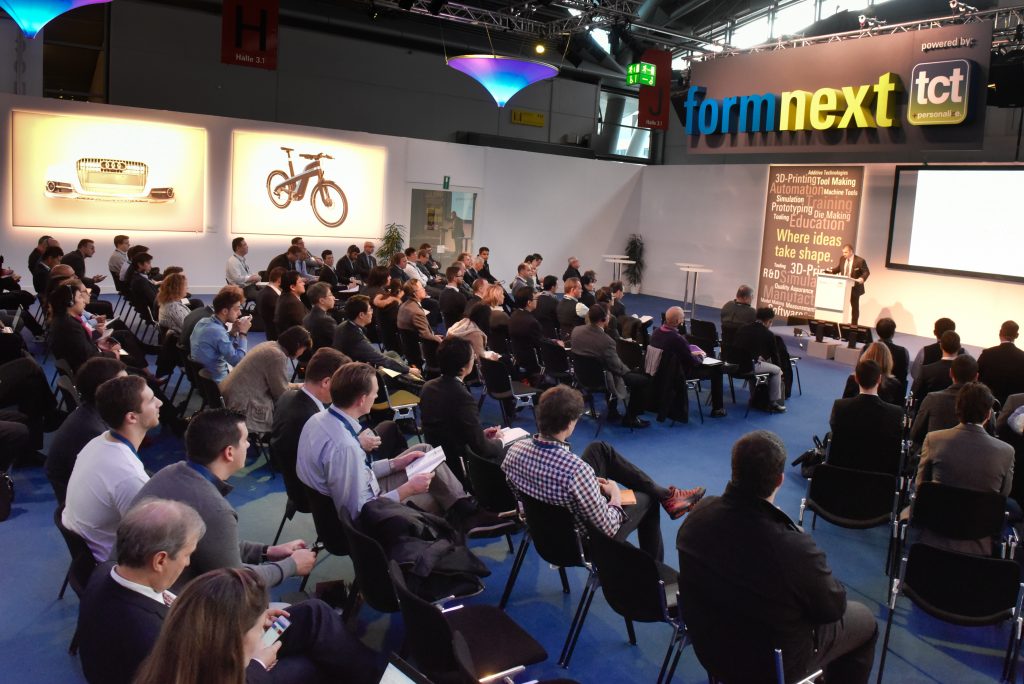
Materialise launches Magics20
Materialise used formnext to release Magics20, the latest version of its industry-leading data and build preparation software. The company stated that with Magics20, the efficient use of existing and emerging AM technologies, metal AM systems in particular, has never been easier. Magics20, combined with Materialise’s range of software solutions for AM that include an enterprise software solution (Streamics), a range of Build Processors, an Additive Manufacturing Control Platform (AMCP) and more, is recognised as critical software for the AM industry.
Commenting on Magics20, Materialise Founder and CEO, Fried Vancraen, stated, “When I purchased my first stereolithography machine and started Materialise 25 years ago, the industry lacked the software needed to efficiently connect a design to a 3D Printer. In order to survive and thrive as a company, we needed to develop a solution that allowed us to meet customer demand for 3D printed prototypes, on time and as ordered. The resulting software worked so well that we brought it to the market as Magics. Over the years, Magics has helped lift the AM industry as a whole to new levels by optimizing data and build preparation for an expanding range of materials and technologies.”
He continued, “Now, 25 years later, we face new challenges as our customers increasingly request 3D-printed, end-use parts that meet the demanding standards of their industries – and it is a challenge we have proven able to meet. And once again, Materialise is ready to raise the AM industry as a whole to new heights by granting access to a software backbone that enables certified manufacturing: Magics20.”
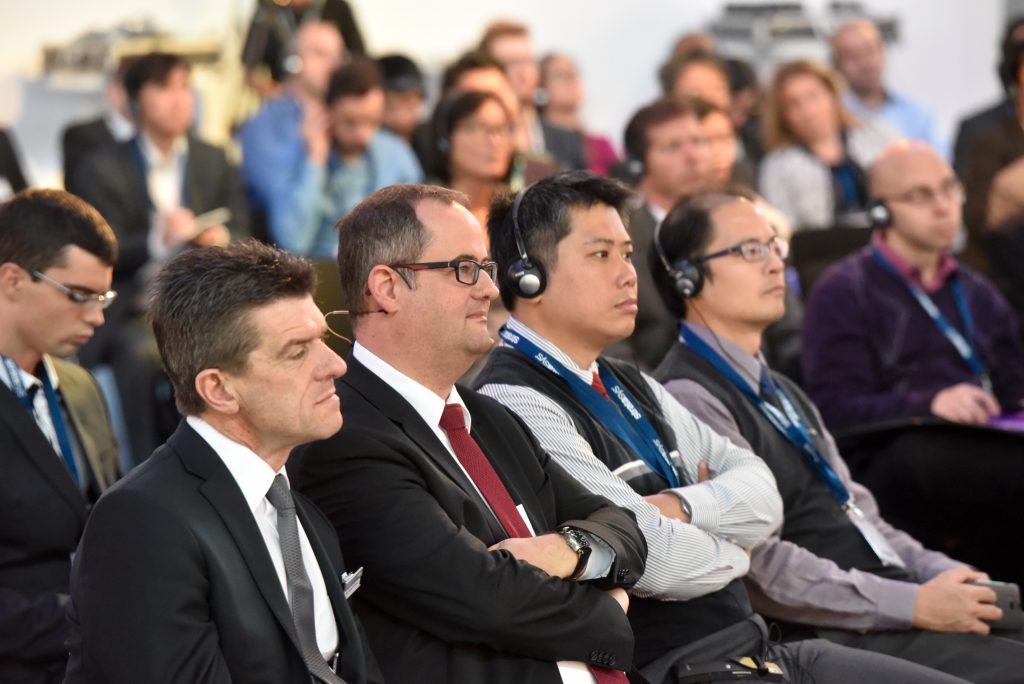
Powder manufacturers make their mark
A number of specialist metal powder manufacturers and distributors also exhibited at formnext, recognising the increasingly interesting shipment volumes as the metal AM industry moves from prototyping to volume production. Whilst all the powder-based metal AM machine suppliers also sell their own branded powder to customers, with the associated guarantee of quality and machine compatibility, there is a recognition that when a producer’s metal AM volume reaches a certain level of production there is a strong economic case for dealing directly with metal powder producers. Many powder producers that serve the Metal Injection Moulding (MIM), Hot Isostatic Pressing (HIP) and Spray Forming industries are well used to supplying critical sectors such as the aerospace industry. Key powder producers at formnext included AP&C, Erasteel, HC Starck, Höganäs, Materials Technology Innovations Co Ltd, Praxair and Sandvik Opsrey.
Formnext 2016
Formnext 2016 is scheduled to return to Frankfurt am Main from 15–18 November, 2016. For more information visit www.formnext.com
Author
Nick Williams
Metal Additive Manufacturing
[email protected]
www.metal-am.com







